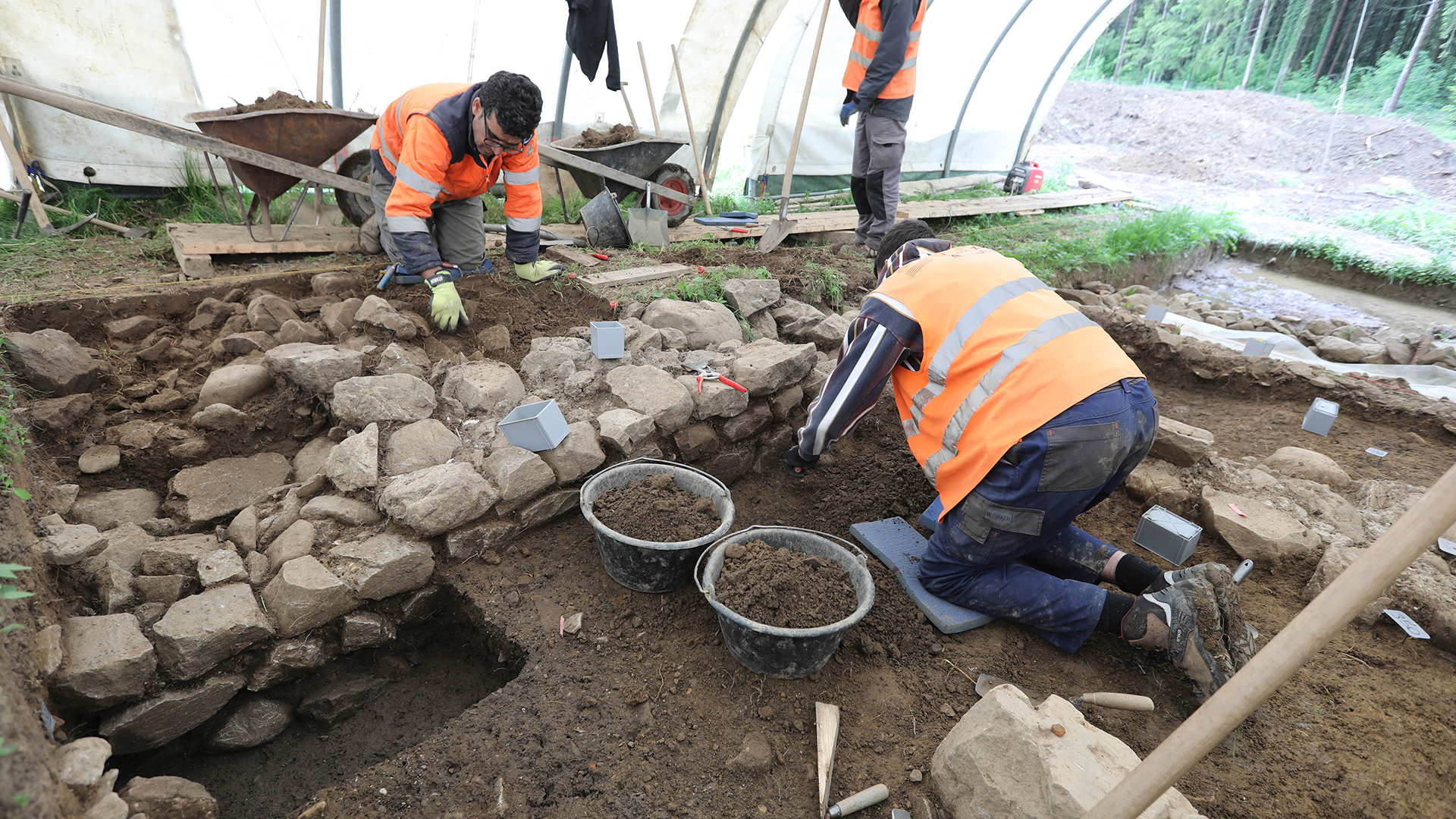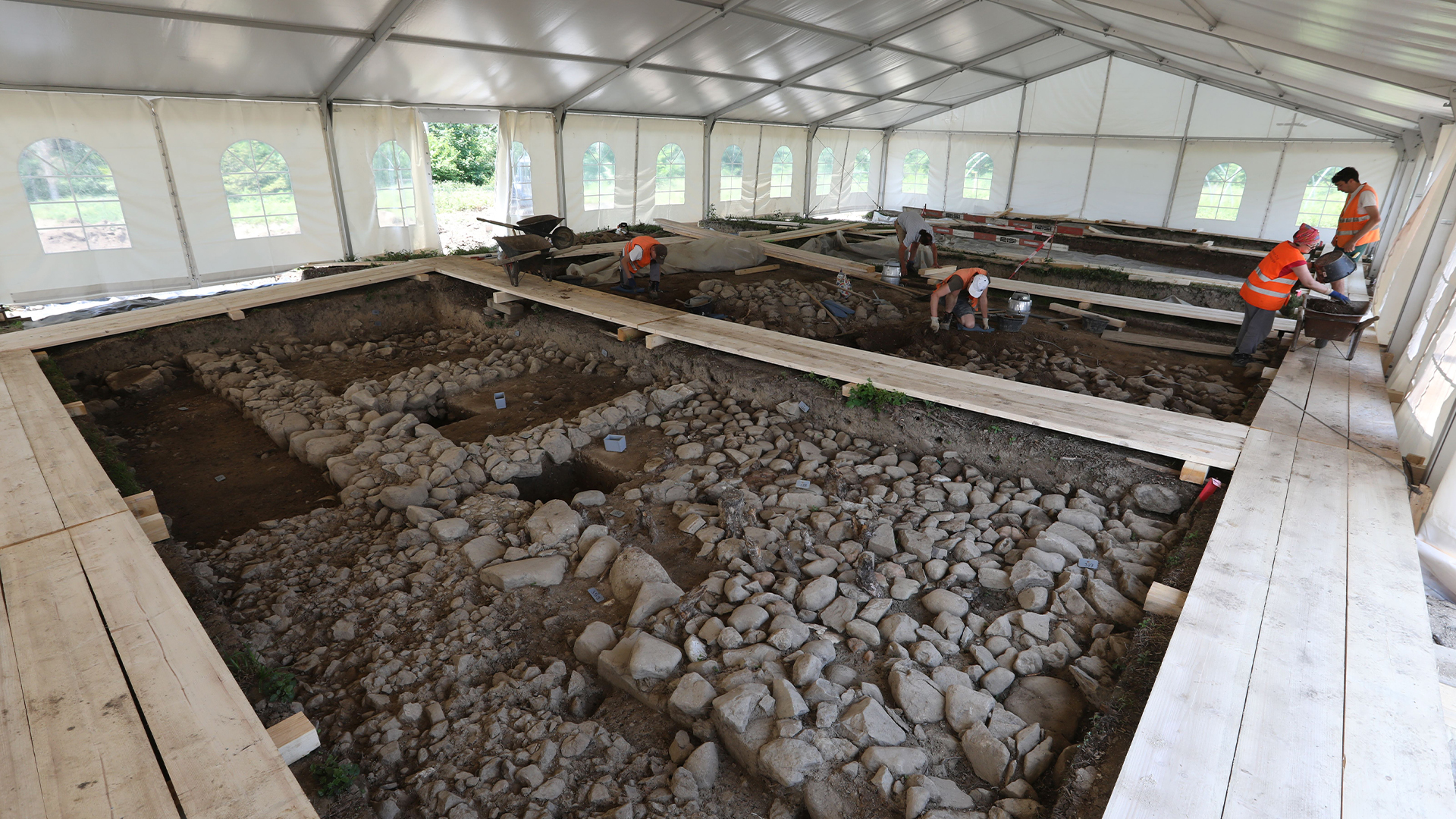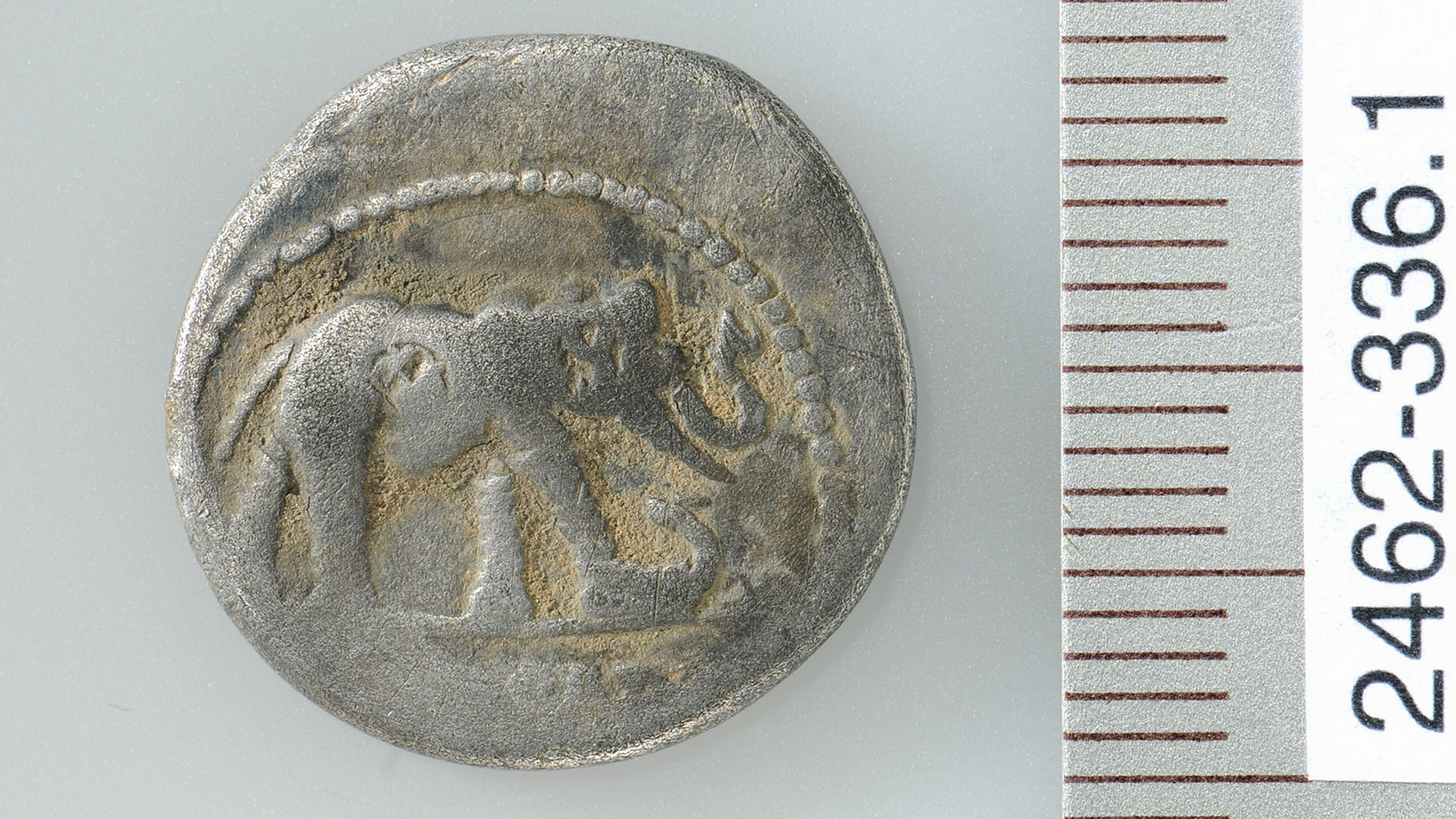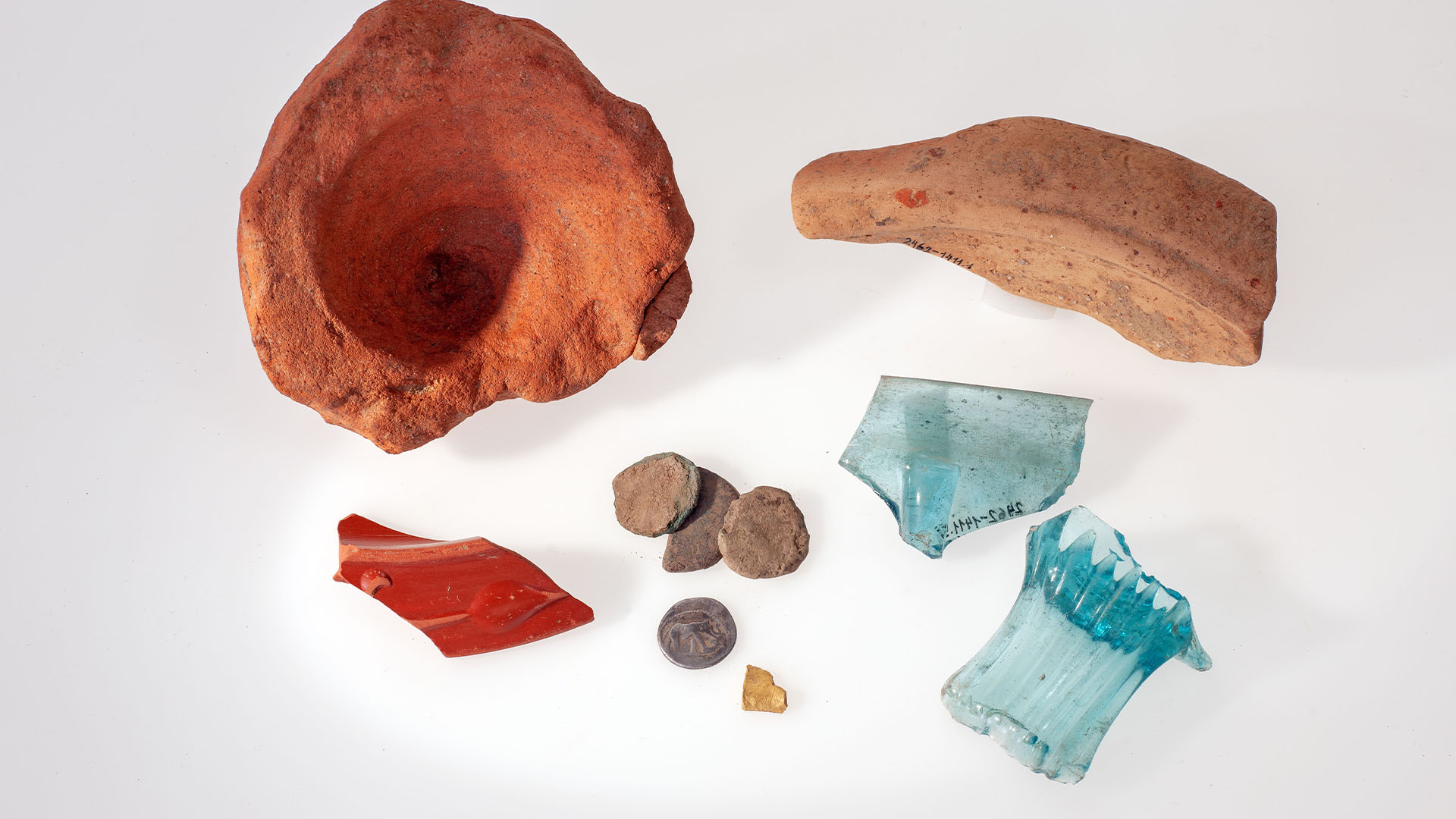Ancient Roman walls discovered in Swiss Alps are an 'archaeological sensation'
Archaeologists have unearthed ancient Roman walls in the foothills of the Swiss Alps.

Archaeologists in Switzerland have discovered the remains of 2,000-year-old Roman walls in the foothills of the Alps.
The walls, which once protected a Roman building complex, were found during the excavation of a gravel pit in Cham in the canton, or state, of Zug in central Switzerland. So far, archaeologists have also unearthed pieces from a plaster wall; iron nails; gold fragments, possibly from jewelry; and items such as bowls, millstones for grinding, glassware, crockery and ceramic jugs known as amphorae.
The findings are an "archaeological sensation" for the region and could shed light on Roman activity in central Switzerland, officials with the Office for the Preservation of Monuments and Archeology said in a translated statement.
Related: 'Lost' 2nd-century Roman fort discovered in Scotland

"Roman buildings of similar dimensions were last excavated in Cham-Heiligkreuz almost 100 years ago," Gishan Schaeren, head of the Department of Prehistory and Protohistoric Archaeology, said in the statement. "We were also amazed that the top bricks were even visible above ground."

The walls extend over an area of at least 5,300 square feet (500 square meters). But it's unclear how Romans used the site, including whether it was a "villa with a view or a temple building," Christa Ebnöther, a professor of archeology of the Roman provinces at the University of Bern, said in the statement.

During the excavations, archaeologists found evidence of elite people at the site, whose belongings included imported Roman tableware known as terra sigillata — which means "sealed earth" in Latin — and detailed glass vessels. Meanwhile, the amphorae, which typically held liquids such as wine, olive oil and fish sauce, are evidence that Romans in the region traded with those in the Mediterranean, the team said.
Sign up for the Live Science daily newsletter now
Get the world’s most fascinating discoveries delivered straight to your inbox.

The archaeologists also found several copper and bronze coins, including a silver denarius minted by Julius Caesar from the first century B.C., which depicts an elephant trampling on a creature that is either a snake or a dragon.
The discovery of the Roman walls is not the first ancient find in the area. Archaeologists previously found the remains of a middle Bronze Age settlement, burials from the late late Bronze Age, and a number of coins from the era of the Celts, a people who later sacked Rome.
People have a chance to visit the Roman ruins during an "excavation day" on Sept. 2, according to the statement.

Laura is the archaeology and Life's Little Mysteries editor at Live Science. She also reports on general science, including paleontology. Her work has appeared in The New York Times, Scholastic, Popular Science and Spectrum, a site on autism research. She has won multiple awards from the Society of Professional Journalists and the Washington Newspaper Publishers Association for her reporting at a weekly newspaper near Seattle. Laura holds a bachelor's degree in English literature and psychology from Washington University in St. Louis and a master's degree in science writing from NYU.









